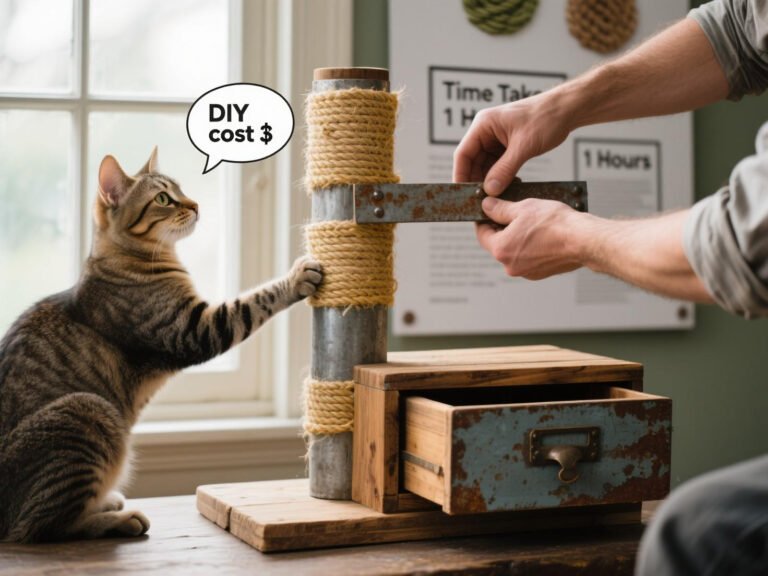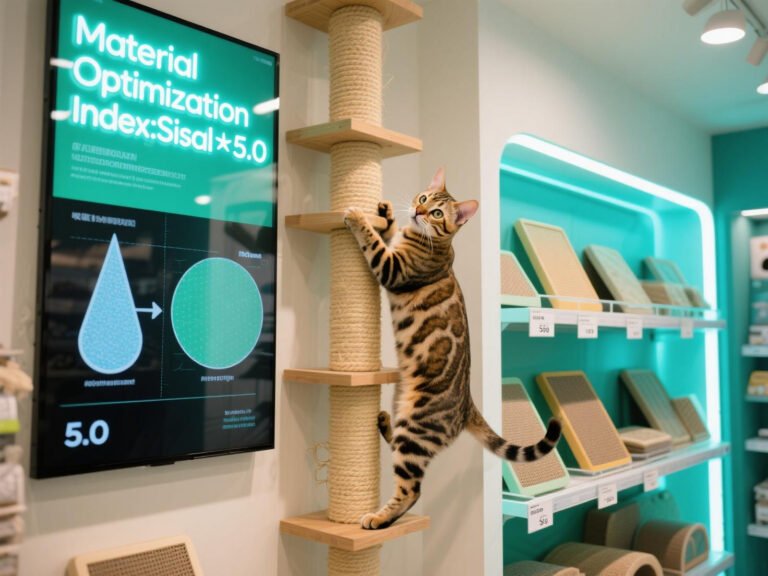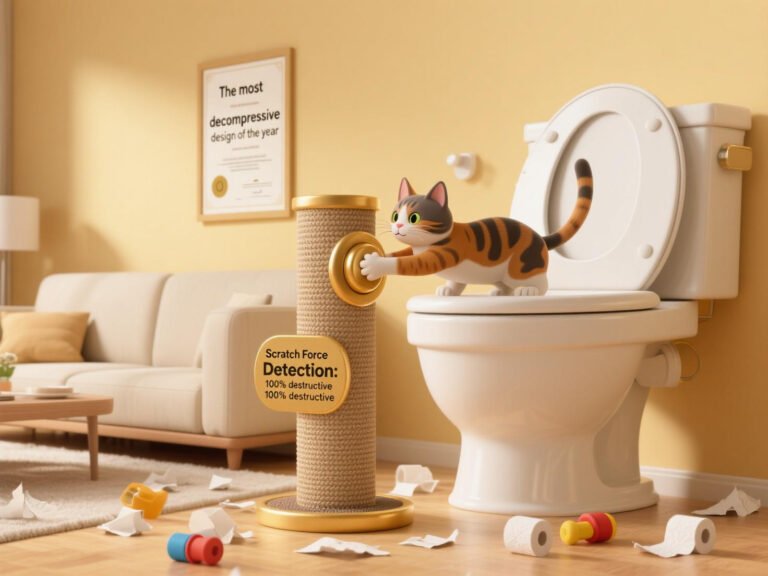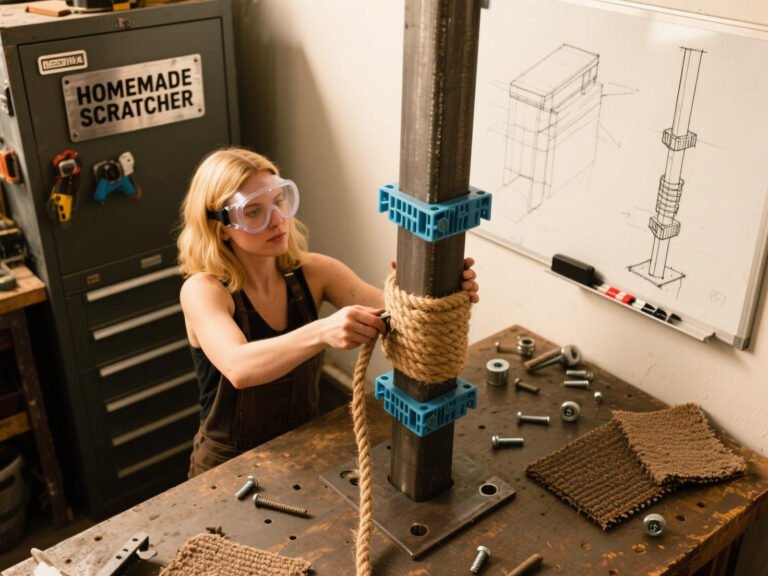How to Make a Cat Scratching Post with Carpet: Step-by-Step Guide
If your cat loves scratching carpets but ignores their post, why not combine the two? Building a DIY carpet scratching post is affordable, customizable, and satisfies your cat’s texture preferences. This guide walks you through the process with vet-approved safety tips, budget-friendly hacks, and solutions to common pitfalls.
Why Choose Carpet for a Scratching Post?
Carpet is a popular material for scratching posts because:
- Familiar Texture: Mimics household carpets, reducing furniture damage.
- Gentle on Paws: Softer than sisal rope, ideal for kittens or senior cats.
- Cost-Effective: Repurpose old carpet scraps for under $10.
But Beware: Cats may confuse DIY posts with your rugs. Strategic training is key!

Materials & Tools You’ll Need
Supplies
| Item | Purpose | Budget Option |
|---|---|---|
| Carpet scrap (12×30 inches) | Scratching surface | Use remnants from local stores (often free!) |
| PVC pipe (4-inch diameter, 24-inch height) | Post base | Repurpose cardboard tubes |
| Wooden base (16×16 inches) | Stability | Plywood cutoffs |
| Non-toxic adhesive (e.g., Titebond III) | Secure carpet | Double-sided carpet tape |
| Staple gun | Attach carpet | Heavy-duty duct tape |
Safety Checklist
- Avoid carpets treated with fire retardants or adhesives.
- Ensure staples/glue are fully secured to prevent ingestion.
Step-by-Step Instructions
Step 1: Prepare the Base
- Cut the Wooden Base: Sand edges to prevent splinters.
- Attach the PVC Pipe: Center the pipe on the base and secure with screws or strong glue.
- Pro Tip: Weight the base with sandbags for wobbly cats.
Step 2: Wrap the Carpet
- Measure & Cut: Lay the carpet flat, place the PVC pipe on top, and cut a piece 2 inches wider than the pipe’s circumference.
- Apply Adhesive: Spread glue on the pipe, then press the carpet onto it. Overlap the seam at the back.
- Secure Edges: Use a staple gun or duct tape to fix loose ends.
User Hack:
“I wrapped the carpet diagonally for extra texture. My cat hasn’t touched the sofa since!” – Reddit User @DIYCatMom
Step 3: Add Stability & Style
- Anchor the Base: Glue non-slip rubber pads to the bottom.
- Optional Perch: Attach a small carpeted platform (10×10 inches) to the top with screws.
Step 4: Train Your Cat to Use It
- Placement: Position the post near their favorite scratching spot.
- Lure with Catnip: Sprinkle silvervine or catnip on the carpet.
- Reward Good Behavior: Offer treats when they scratch the post.

Training Timeline:
| Day | Activity |
|---|---|
| 1–3 | Introduce post with play sessions nearby |
| 4–7 | Redirect paws gently to the post |
| 8–14 | Reward independent use |
Common Mistakes & Fixes
Mistake 1: Loose Carpet
- Signs: Frayed edges, peeling seams.
- Fix: Re-wrap with stronger adhesive (e.g., Gorilla Glue) and add staples every 2 inches.
Mistake 2: Ignoring the Post
- Why: Wrong location or texture.
- Fix: Move the post to a high-traffic area or add a dangling toy.
Mistake 3: Tipping Over
- Why: Base is too light.
- Fix: Add weight (sandbags) or upgrade to a wider base (20×20 inches).
FAQ: Carpet Scratching Post Essentials
Q: Can I use old carpet?
A: Yes! Clean it thoroughly to remove dust or chemicals. Avoid carpets exposed to pesticides.
Q: How do I clean the post?
A: Vacuum weekly and spot-clean with enzymatic spray (e.g., Nature’s Miracle).
Q: Is carpet safer than sisal?
A: For kittens, yes. Sisal can be too rough, but adult cats may prefer it. Offer both options.
Q: My cat still scratches the rug. What now?
A: Cover furniture with double-sided tape temporarily and reward post use aggressively.
References
- ASPCA. (2024). Household Hazards for Cats: Adhesives and Carpets.
- PetMD. (2024). DIY Cat Toys: Safety Guidelines.
- The Spruce Pets. (2025). How to Choose Non-Toxic Glues for Pet Projects.
- Reddit Community r/DIYCatOwners. (2024). Carpet Scratching Post Success Stories.





